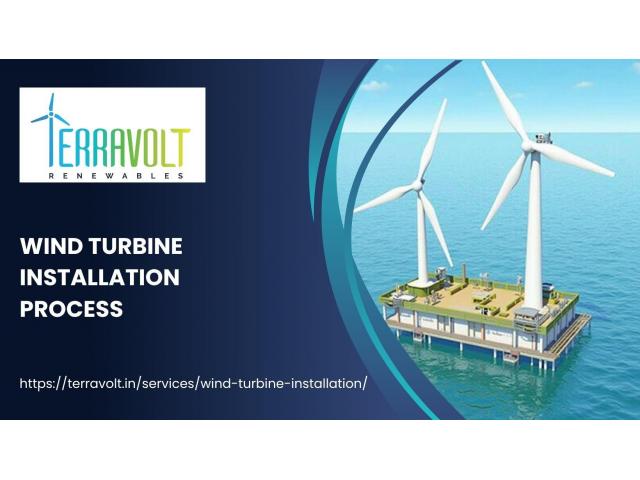The shift towards clean energy is no longer just a trend it’s a necessity. As climate change accelerates, nations worldwide are making moves to reduce their carbon footprint. In India, wind energy is playing a pivotal role in this transition.
To know more please visit : https://terravolt.in/services/wind-turbine-installation/
The country is already among the top wind energy producers globally, and it’s only picking up pace. But how exactly are those tall, graceful turbines installed in the first place?
Let’s walk through the wind turbine installation process step by step.
Step 1: Site Assessment and Planning
Before anything is built, a lot of groundwork happens literally and figuratively. Experts begin by identifying ideal locations based on wind patterns, environmental impact, proximity to the grid, and land availability. This stage also involves getting government approvals, land permits, and conducting feasibility studies.
Factors like wind speed, direction, and consistency are measured using equipment like anemometers over a period of several months. Once the site checks out, the layout of the wind farm is planned.
Step 2: Infrastructure Development
Once the site is finalized, basic infrastructure is developed. This includes access roads for transporting massive turbine components, power substations, and underground cabling systems. Given the size of turbine blades often longer than a passenger aircraft’s wingspan logistics planning is key.
At this stage, teams also prepare concrete foundations that can support turbines weighing hundreds of tons. The depth and diameter of the foundation depend on soil conditions and the height of the turbine.
Step 3: Delivery and Pre Assembly
The wind turbine components towers, nacelles, hubs, and blades are usually transported from manufacturing units to the installation site. These parts are either assembled nearby or brought in pre-assembled, depending on accessibility and equipment availability.
It’s not uncommon for these parts to be sourced from different locations, especially when working with top wind turbine manufacturers in India who have facilities across the country.
Step 4: Erection of the Tower
This is where the real visual transformation begins. Using high-capacity cranes, the steel or concrete tower sections are lifted and stacked one over the other. Precision is critical here. A minor misalignment can result in vibration issues or long-term operational inefficiencies.
Workers secure each section with bolts and internal ladders or lifts are added for future maintenance access.
Step 5: Installing the Nacelle and Rotor
Once the tower is ready, the nacelle the turbine’s engine room is hoisted and secured at the top. This part houses the gearbox, generator, and control systems. Following that, the rotor hub and blades are assembled and lifted.
Blades may be attached to the hub on the ground and lifted as a single piece or assembled individually at the top, depending on weather conditions and crane capabilities.
This phase requires tremendous expertise and coordination, which is why many developers prefer to partner with experienced wind EPC contractors in India who specialize in turnkey solutions.
Step 6: Electrical Connection and Testing
Once the turbine structure is in place, electrical wiring connects it to the power system. This includes linking the turbine to the on-site substation, which then connects to the main power grid.
Technicians run a series of safety checks, diagnostics, and performance tests. Everything from blade pitch control to brake systems is tested to ensure the turbine can handle high winds and other real-world conditions.
Step 7: Commissioning and Monitoring
Once all systems are cleared, the wind turbine is commissioned. From here on, it begins generating clean, renewable electricity. However, the work doesn't end here. Remote monitoring systems track performance in real time, flagging maintenance issues, inefficiencies, or breakdowns.
With India pushing hard on renewables, particularly wind energy farms, monitoring plays a crucial role in maximizing output and ensuring grid stability.
Looking Offshore and Ahead
India is also exploring opportunities in offshore wind, with potential developments along the Gujarat and Tamil Nadu coasts. These projects require a different level of engineering, which is why specialized offshore wind EPC contractors are being brought into the fold.
Conclusion
Installing a wind turbine is not just about putting up a giant fan. It’s a detailed, highly coordinated engineering project involving design, construction, logistics, and technology. The payoff, though, is immense clean electricity that powers homes, industries, and entire cities.
The world is moving towards sustainable alternatives. With the rise of renewable energy companies, particularly the top renewable energy companies in India, we’re getting one step closer to a cleaner and greener tomorrow.


















